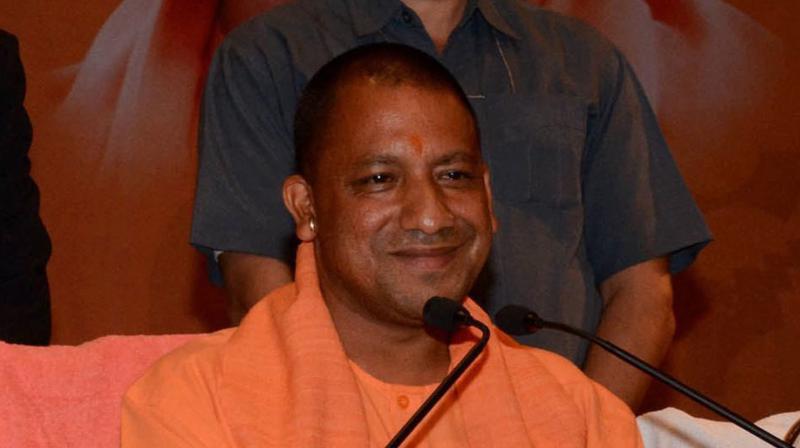Will BJP put Hindutva on backburner in UP?

Of the four states where the BJP has formed the government, there is little doubt that most attention will be focused on Uttar Pradesh, where it has an overwhelming majority and where the party’s supreme leader Narendra Modi and party chief Amit Shah have chosen Yogi Adityanath as chief minister, whose image is that of a Hindutva hothead. The critics are waiting for the BJP to go ahead with the building of the Ram temple and make things difficult for Muslims in the state, confirming that the BJP is really as diabolical as it’s made out to be. The BJP’s counter-strategy will be to prove their detractors wrong. This is why Narendra Modi, Amit Shah and Adityanath chant the development mantra. It is futile to split hairs on whether the BJP is sincere on its development agenda, or whether it’s just a cloak to pursue its real goal of establishing a Hindu Rashtra, starting with the country’s most populous state that has a sizeable Muslim segment. In truth, the Adityanath government’s working may be less dramatic and more quotidian. It is possible both sides may play populist tricks to keep themselves in the news. Every slight and every episode of friction involving Muslims will be highlighted, and the BJP and its critics would use it to maximise their positions. But political theatrics will have less to do with the day-to-day working of the government. In the process the media won’t be able to report on the work being done or not done in UP by the new rulers, but the small flashpoints will get amplified.
What can be plausibly predicted now is that there will be no move by the Adityanath government to build the Ram temple in Ayodhya, though the issue will be kept simmering. The BJP stands to lose if the temple is built as then it would be a closed chapter. As a matter of fact, BJP leaders like L.K. Advani were unhappy with the Babri Masjid’s demolition as it had killed the proverbial golden goose. Mr Modi will want to use the temple issue as a weapon of last resort, and he wants to legitimise BJP politics on the basis of the development agenda. The second major issue of interest is whether there would be greater discrimination against Muslims in UP. Many liberal, secular ideologues expect this is indeed what would happen. Again, the Modi-Shah-Adityantah trio will want to prove the critics wrong. There may be many Muslim-targeted welfare measures which would be used to drive a wedge in the community between the reactionary leadership and the majority in the community over triple talaq. There would be greater emphasis on economic incentives and palliatives for UP’s Muslims. But this would be done in the Modi manner. Help Muslims without saying or being seen as doing that. To be seen doing something for Muslims will be to fall into the Congress trap of appeasing Muslims.
More than what the BJP will or will not do about the temple issue or with government help to Muslims, the BJP will continue with its ad blitz, shouting from the rooftops all the schemes it announces and leaving no one the time to ask if they’ve been implemented. It’s the strategy the Modi government has followed in the past three years at the Centre, it’s a strategy Mr Modi had followed as chief minister for over a decade in Gujarat and Madhya Pradesh’s BJP CM Shivraj Singh Chouhan has been following into his third term. Of course, there is little improvement, including in Gujarat, due to government initiatives and claims. Madhya Pradesh remains one of the backward states despite its aggressive pitch for global investments. All one needs to do is travel through the sprawling state to get a hang of how things are not happening there. It’s the state of affairs at the Centre as well: tall and empty claims far outstrip achievements on the ground. But that’s the BJP style of governance. Aggressive media campaigns and public relations s are the bread, butter and jam of BJP governments.
What is one to make of the BJP governments in Goa and Manipur? Goa CM Manohar Parrikar made the astute statement that his government is not that of the BJP but that of a coalition, with the Maharashtrawadi Gomantak Party and Goa Forward Party, led by the BJP. In Manipur too it’s a BJP-led coalition government, comprising the Naga People’s Party, Lok Janshakti Party and Naga People’s Front. The Goan coalition is a bit more stable than the Manipur one as in Imphal, the BJP will have to do a fine balancing act between Nagas and Manipuris. While Goa and Manipur will be important for the BJP as spreading its reach from west to east, the stakes are not as high as in UP. Uttarakhand’s case is a curious one despite the BJP’s enormous majority in the state. It’s difficult to differentiate between the Congress and the BJP because of defections from one side to another. There is no clear political or ideological division between the two parties here. It would appear that Mr Modi and Mr Shah can turn their backs on these four states and focus on the next round of Assembly elections in Gujarat and Himachal Pradesh. Is there a possibility of the BJP cookie crumbling in Lucknow, Dehradun, Panjim and Imphal? At the moment, it seems idle speculation. The party and leaders cannot, however, take the people in these states for granted. People play the role of Damocles’ sword in a democracy and the BJP can’t hope to escape the anxieties that it breeds among those in office.

